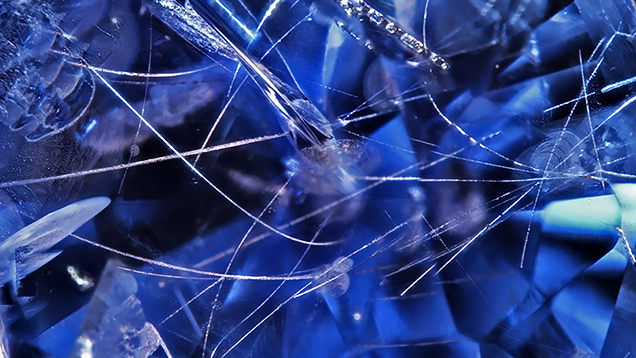Curved Tubes in Blue Sapphire

During a GIA field expedition to Vietnam in May 2016, a 0.45 ct faceted blue sapphire containing numerous hair-like curved tubes (see above) was discovered at the gem market in Yen The. While the seller said the stone was mined in the Luc Yen area, this could not be confirmed. Unlike rubies and spinels, blue sapphires are not common in northern Vietnam. Analysis at GIA’s laboratory in Bangkok revealed that the stone had a metamorphic origin and had been heat treated. The tubes contained highly reflective glassy masses.
Curved linear inclusions are well known in different types of gemstones. The most famous are probably the horsetails in demantoid garnet. Inclusions with a similar appearance have been observed in emeralds from Sandawana (Zimbabwe), quartz, and rhodonite (E.J. Gübelin and J.I. Koivula, Photoatlas of Inclusions in Gemstones, Vols. 1 and 2, Opinio Verlag, Basel, Switzerland, 1986 and 2005; V. Pardieu, “Winza ruby? No sorry, my name is rhodonite!” http://www.giathai.net/rhodonite).
In the corundum family, the only documented variety containing curved linear features are rubies from Winza, Tanzania (D. Schwarz et al., “Rubies and sapphires from Winza, central Tanzania,” Winter 2008 G&G, pp. 322–347). To our knowledge, these features have never been documented in blue sapphires.
.jpg)


